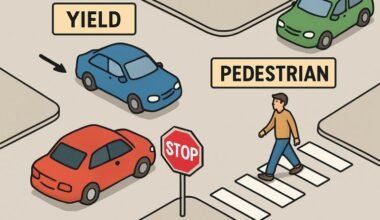Most people think of towing in rather common manners. A car breaks down on the side of the road, won’t turn on in a parking lot, receives a flat tire. These kinds of situations are predictable enough that calling a tow truck feels like the best option. However, there’s a whole class of towing that catches many vehicle owners off guard, situations where it’s not exactly apparent what’s going on or what seems to be an easy solution is anything but.
Often, these towing scenarios involve larger vehicles, unlikely locations, or situations that fall outside the realm of what someone considers “typical breakdown.” Knowing when and how these situations require a professional tow helps avoid dangerous improvisation and costly mistakes that emerge from attempting to handle things without proper equipment or expertise.
When RVs Become Immovable Objects
RV breakdowns are surprisingly common and almost always more complicated than car breakdowns. These vehicles are massive, heavy, and often break down in places where getting help is difficult. A motorhome that loses power on a mountain pass or develops transmission problems miles from the nearest town creates a situation most owners never anticipated when they planned their trip.
The size and weight of RVs mean standard tow trucks can’t handle them. Many weigh 10,000 to 30,000 pounds when fully loaded, which puts them well beyond what typical towing equipment can manage. When an RV breaks down, owners often discover too late that their roadside assistance coverage doesn’t include vehicles of that size, or the nearest company capable of towing something that large is hours away.
What makes RV towing particularly tricky is that these vehicles weren’t designed with towing in mind the way cars and trucks are. The attachment points are different, the weight distribution is unusual, and towing one improperly can cause serious damage. There are heavy-duty vehicles that can be towed by a tow truck, but RVs require specialized flatbed carriers or wheel-lift systems designed specifically for their unique construction.
Construction Equipment That Breaks Down
Certain construction equipment gets stuck in places that make it hard to believe towing is even an option. Backhoes that break down in ditches, excavators that lower into soft ground on job sites, bulldozers halfway up hills, these scenarios occur often but leave contractors and crew seeking solutions as to how they can best move these extremely heavy devices to a special repair shop.
Construction equipment weighs a minimum of 15,000 pounds (for smaller pieces of machinery) and goes up to over 80,000 pounds (for larger excavators or bulldozers). Thus, it’s immensely complicated when something breaks down but requires specialized recovery vehicles with immense winching capabilities and operators knowledgeable of how to safely lift and transport machines with unforeseen shapes and weight distribution.
Additionally, getting construction equipment off the site adds complication; the weather could be muddy or cluttered by other pieces of equipment or materials. The access road may not hold the weight of a loaded recovery truck. What seems like an easy-to-tow endeavor from behind a desk becomes an all-day recovery operation involving multiple vehicles and careful deliberation.
Buses In Dangerous Spots
Tour buses and school buses seem to break down at the worst times. A tour bus without power on a rural highway or a school bus that won’t start on a cul-de-sac presents immediate logistical problems as people need to get where they’re going but buses are massive vehicles that complicate speed and resolution.
Buses are long, cumbersome vehicles. A coach bus can be 40 feet long and weigh 40,000 pounds or more. School buses are shorter but still massive yet have high ground clearance, making it even worse for them should they break down in tight spaces. The necessary equipment for such recovery is not lying around in most tow companies; it takes time to find someone with the appropriate tools and available capacity.
Along the same lines, passengers can complicate things; a bus full of people requires alternate transportation options quickly but also needs to get off the road as soon as possible to prevent traffic flow issues. Thus, there’s pressure, before proper equipment arrives, to attempt to move the vehicle itself which is when risky shortcuts come into play.
Trucks Stuck in Residential Areas
Delivery trucks get stuck in residential areas far more often than imagined. A delivery truck with too low of access driving down a road lined with tree branches or a delivery semi attempting to turn around in a cul-de-sac with no way out, these trucks get stuck far more often than people assume.
The problem with delivery trucks stuck in residential areas is there is no good exit except one, they need professional assistance. A driver can’t back out because they’re stuck against something too big or it’s turned in such a way that’s prevented it from moving. If it attempts to go forward, it will hit something it’s not allowed to hit; thus a truck’s size forced it into an area not intended for such roads.
Towing trucks out of residential areas require more than horsepower; they require careful maneuvering in tight spaces with power lines above while parked cars line both sides in addition to homeowners nervously watching on as their street now accommodates a massive recovery operation. The operator pulling everything out also needs to navigate such tight quarters while managing tons of weight behind.
Farm Equipment on Public Roads
Farm equipment breaking down on public roadways causes chaos that rural tow companies experience often but urban drivers never expect. A combine that loses power while driving between fields or a tractor whose transmission fails while attempting to cross a two-lane street, these machines are massive, slow-moving beasts that stall far too easily.
Farm equipment presents unique challenges for towing due to its size and functionality; it isn’t designed for towing because it’s designed for fieldwork instead. The wheels might be uneven sizes or the weight distrubution present inconsistencies; there may be parts coming out the back which need specialized ramps and securing devices, a special tow bed won’t accommodate these situations.
The timing compounds issues; farmers often move equipment during planting and harvesting season meaning every hour matters. A breakdown that needs ten hours worth of proper equipment is certainly detrimental to financial stability, a toll that makes recovery seem urgent where methods that would otherwise not be advised are now in play.
Off-Road Vehicles Stuck in Random Places
Recreational off-road vehicles sometimes end up in places where it’s impossible for recovery vehicles to reach them; a jeep stuck miles away from any paved road through mud or a lifted truck whose rolled over miles from anywhere, these situations require special recoveries more than just basic tow jobs.
The problem with off-roading difficult recoveries is access, not every recovery vehicle can access every situation due to terrain or weather extremes or narrow rights of way. Sometimes locations require winching, which means multiple vehicles as maybe conditions need to change before heavy equipment can reach these destinations safely.
What vehicle owners often don’t realize is that off-road recovery costs significantly more than normal roadside towing, the time involved and need for specialized access/equipment mean someone expecting just a couple hundred pounds for recovery may find themselves paying exponentially more for what could’ve gone otherwise planned more easily.
The Common Denominator
These surprising scenarios share something in common: they’re BIGGER than standard cars or they’re larger than expected. They’re places not anticipated by those driving through life without problems like planned access road repairs or construction plans mapped out ahead of time or they’re worse than simply breaking down, a car runs out of gas versus becoming irretrievably trapped due to poor choices made (or no fault whatsoever).
Understanding where simple hookups and towing are not enough sets the expectation realistic when it’s something previously expanded into something larger, and when it’s in a condition hardest to deal with without appropriate assessment at least services promised they’ve arrived early instead of finding out much later they’ve done nothing except hitch for five minutes when it could’ve been on the road when dedicated resources acknowledge the time it might take once reassessing reality.



